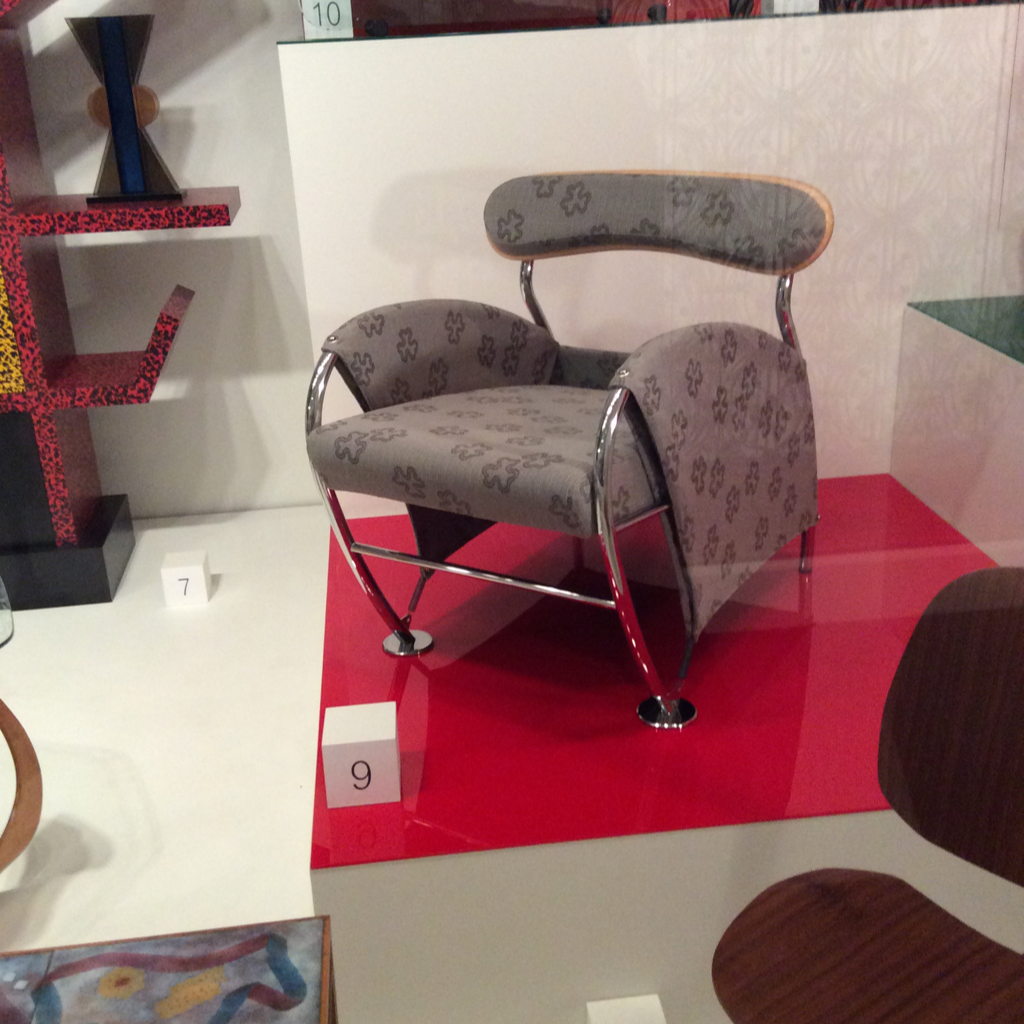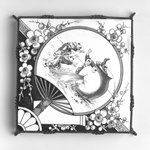"Numero Uno" Armchair
Decorative Arts and Design
Today when we think of where inventive contemporary design
is manufactured, we often think of Italy. This, however, was not
always the case. Wide acceptance of modern design came
somewhat later in Italy than elsewhere, perhaps because of the
ever-present conservative influence of the palpable Roman classical past and the slow development of the Italian economy
in the twentieth century. To be sure, before World War II there
were important modern designers in Italy, foremost Gio Ponti,
an architect from Milan whose influence spread beyond his
native country through two architecture and design magazines he
founded, Domus and Stile. And the Fascist regime of Mussolini in
the pre-World War II period did embrace modern architecture,
unlike the Nazi regime in Germany, which consciously rejected
modernism as a source of foreign, moral corruption. It was not,
however, until the post-World War II era, when the Italian economy
expanded rapidly, that Italian modern design achieved international recognition.
One pivotal event made consumers in the United States aware
of the diversity and accomplishments of modern Italian design—the exhibition Italy at Work, which travelled to twelve venues
between 1950 and 1954. The exhibition was initiated by the Art
Institute of Chicago in partnership with two organizations devoted to the promulgation of Italian design, Handicraft Development
Incorporated in the United States and its corresponding institution
in Italy, CADMA. Italy at Work included hundreds of objects by
more than 150 artisans and manufacturers and featured furniture,
ceramics, glass, textiles, metalwork, jewelry, shoes, knit clothing,
and industrial design. The exhibition opened at the Brooklyn
Museum, and at its conclusion, when the objects were dispersed
among the host institutions, the lion’s share, more than two hundred items, came to the Museum.
In the second half of the twentieth century, Italy became a
center for modern design. Many foreigners went there to study
and work at small, adventurous firms that produced high-quality objects.
MEDIUM
Chromed plated steel, textile, ash, metal springs, plastic, felt, Velcro
DATES
ca. 1989
DIMENSIONS
30 5/16 x 26 3/16 x 31 7/8in. (77 x 66.5 x 81cm)
(show scale)
MARKINGS
no marks
SIGNATURE
no signature
INSCRIPTIONS
no inscriptions
ACCESSION NUMBER
1990.4
CREDIT LINE
Gift of Palazzetti Inc.
CATALOGUE DESCRIPTION
Armchair, mirror-polished and chrome-plated tubular steel, fabric, ash wood, springs, plastic, felt and Velcro. Front legs and arms formed from a continuous tube that extends upward and outward from two flat circular disk feet, each with felt pads on underside, and then curves back where it is soldered / welded (?) to rear leg. The rear legs, with plastic glides, arc forward and then back. A metal post extends from each of the rear stiles and attaches to the rear back support which is upholstered with a foam pad that follows the contours of the wood. Narrow metal tubes form the rear stretcher, front stretcher and two side stretchers. The upholstered seat cushion floats within the frame at an angle that extends outward and upward from the rear. One continuous piece of fabric in a pattern of light and dark gray with biomorphic design is slung over the arms of lower back of chair and is attached by a system of grommets which attach to small knobs at bottom of rear legs and on arms; to the rear stretcher with a Velcro strip and to the bottom of the front legs from a small flat metal triangle to which is attached to a spring that pulls the fabric tautly across the sides of the chair.
CONDITION - Excellent. Original condition from manufacturer.
MUSEUM LOCATION
This item is not on view
CAPTION
Massimo Iosa Ghini (Italian, born 1959). "Numero Uno" Armchair, ca. 1989. Chromed plated steel, textile, ash, metal springs, plastic, felt, Velcro, 30 5/16 x 26 3/16 x 31 7/8in. (77 x 66.5 x 81cm). Brooklyn Museum, Gift of Palazzetti Inc., 1990.4. Creative Commons-BY (Photo: Brooklyn Museum, 1990.4_bw.jpg)
IMAGE
overall, 1990.4_bw.jpg. Brooklyn Museum photograph
"CUR" at the beginning of an image file name means that the image was created by a curatorial staff member. These study images may be digital point-and-shoot photographs, when we don\'t yet have high-quality studio photography, or they may be scans of older negatives, slides, or photographic prints, providing historical documentation of the object.
RIGHTS STATEMENT
Creative Commons-BY
You may download and use Brooklyn Museum images of this three-dimensional work in accordance with a
Creative Commons license. Fair use, as understood under the United States Copyright Act, may also apply.
Please include caption information from this page and credit the Brooklyn Museum. If you need a high resolution file, please fill out our online
application form (charges apply).
For further information about copyright, we recommend resources at the
United States Library of Congress,
Cornell University,
Copyright and Cultural Institutions: Guidelines for U.S. Libraries, Archives, and Museums, and
Copyright Watch.
For more information about the Museum's rights project, including how rights types are assigned, please see our
blog posts on copyright.
If you have any information regarding this work and rights to it, please contact
copyright@brooklynmuseum.org.
RECORD COMPLETENESS
Not every record you will find here is complete. More information is available for some works than for others, and some entries have been updated more recently. Records are frequently reviewed and revised, and
we welcome any additional information you might have.
Tell me more.

This is a great example of postmodern design, which was a direct rejection of the modernist tendency of designers like Marcel Breuer to keep surfaces simple and undecorated. Notice the patterned surface on this chair and the curvilinear shape that gives it a feeling of moving forward. Interestingly, Massimo Iosa Ghini, in this design, has utilized Breuer's signature tubular steel, just in a very different form. In the 1980s many Italian designers embraced Postmodernism, and Italy became a powerhouse of innovative furniture.




















